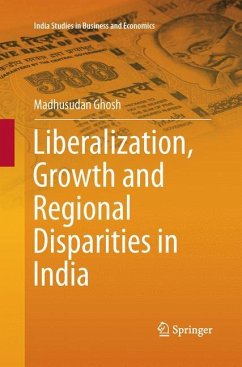
Firms' Location Selections and Regional Policy in the Global Economy

PAYBACK Punkte
38 °P sammeln!
This book offers a new understanding of how firms determine their location and what kinds of regional economic policies are needed to attract factories to a country and a region in a highly globalized economic setting. The theoretical and empirical analyses examine the influence of the transfer pricing system, corporate tax rates, and a country's industrial structure on a firm's decision to locate and the impact of firms' location on regional economic activities. The theoretical analysis elucidates the importance of the above-mentioned factors in the firm's selection of possible location. The ...
This book offers a new understanding of how firms determine their location and what kinds of regional economic policies are needed to attract factories to a country and a region in a highly globalized economic setting. The theoretical and empirical analyses examine the influence of the transfer pricing system, corporate tax rates, and a country's industrial structure on a firm's decision to locate and the impact of firms' location on regional economic activities. The theoretical analysis elucidates the importance of the above-mentioned factors in the firm's selection of possible location. The empirical analysis uses as an example the case of a supply chain in East Asia. The empirical analysis is illustrated with the regional/spatial development experiences at the country level and city level of selected countries and cities. The analysis offers a perspective for understanding the spatial patterns of a cross-border production system.














